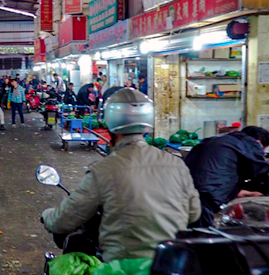
Tag: phenomenology


In Defense of Personal Bias in Ethnographic Research
Past midnight, I’m shivering outside a pub in Shoreditch, the rain beginning to drizzle ever so viciously. It has been fifteen minutes since I left my friends and ordered an UberPool home. As I watch yet another cab drive by, I think about the millions of factors that make one choose how to get...

Going with the Gut: The Case for Combining Instinct and Data
"The lesson I took away from that was, while we like to speak with data around here, so many times in my career I've ended up making decisions with my gut, and I should have followed my gut," Otellini said. "My gut told me to say yes." So said the ex-CEO of Intel, ruing his decision to pass on the...

All That Is Seen and Unseen: The Physical Environment as Informant
INTRODUCTION There is an old riddle, “What is everywhere, but invisible?”, to which the answer is “air”. But in ethnography applied within settings such as marketing and product innovation, the answer might as well be “the physical environment.” While social scientists are trained to...
